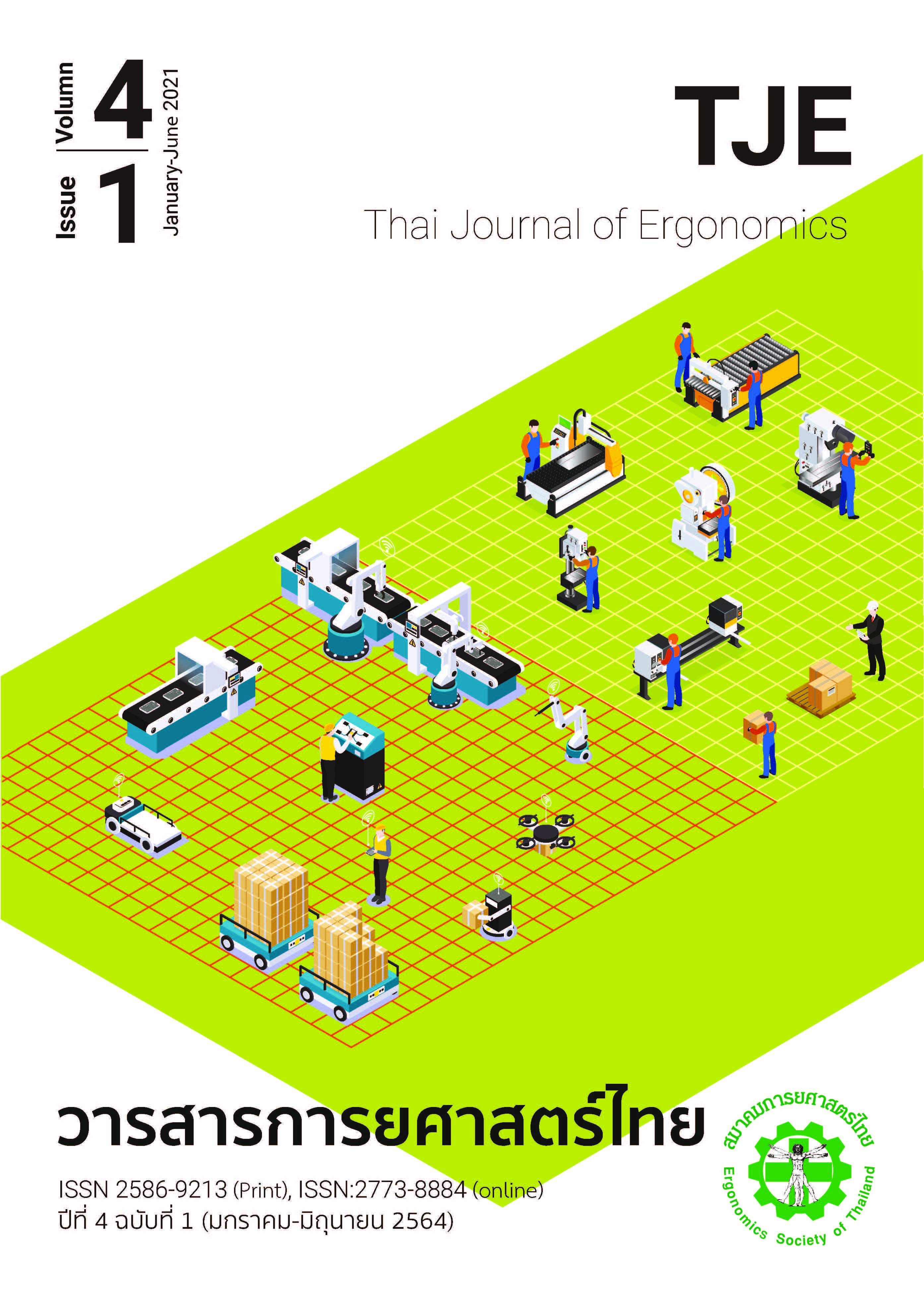Workload assessment of driving practice using a simulation program
Main Article Content
Abstract
ABSTRACT: Today, road accidents are a major global problem. In Thailand, the death rate from road accidents is highest in Asia and ASEAN. The average death is 32.7 people per 100,000 people. The factors that cause road accidents are drivers, vehicles, roads, and the environment. The main factor that causes the accident is the driver. The objective of this research was to examine the mental workload of driver with experience (driving license) and inexperience (no driving license) using driving simulations. This research was tested with tools and software to simulate driving cars for recorded error driving (crash), driving behavior and assess the mental workload by NASA-TLX assessment. The sample consisted of 20 people (10 experienced and 10 inexperienced), age range 17-24 years. Experiments using a driving simulator in the driving training mode. The test is divided into 3 stages 1. Driving in narrow path 2. U-turn 3. Back and stop into a narrow path. This test can show the error of driving, time error, behavior of drivers with driving experience and inexperience.
Article Details
References
World Health Organization. Violence and Injury Prevention; Risk factors for road traffic [Internet]. 2016 [cited 2016 December 13]. Available from:http://www.who.int/violence_injury_prevention/road_traffic/activities/roadsafety_training_manual_unit_2.pdf
กลุ่มพัฒนาความปลอดภัย สำนักงานนโยบายและแผนการขนส่งและจราจร. อุบัติเหตุจราจรบนทางหลวงแผ่นดิน ปี 2561. [อินเทอร์เน็ต]. 2561 [เข้าถึงเมื่อ 20 ส.ค. 2563]. เข้าถึงได้จาก: http://bhs.doh.go.th/download/accident
Vogel L, Bester CJ. A relationship between accident types and causes. In: Proceedings of the 24th Southern African Transport Conference (SATC 2005); 2005 July 11-13; Pretoria, South Africa; Irene: Document Transformation Technologies; 2005 p. 233–41.
Maria A. Introduction to modelling and simulation. In: Proceedings of the 29th conference on Winter simulation; 1997 December 7-10; Atlanta, Georgia. NW Washington: IEEE Computer Society; 1997 p. 7–13.
de Waard D. The measurement of drivers' mental workload. Netherlands: Groningen University, Traffic Research Center; 1996.
Rubio S, Diaz E, Martin J, Puente JM. Evaluation of subjective mental workload: a comparison of SWAT, NASA-TLX, and workload profile methods. Appl Psych 2004;53(1):61–86.
Hart SG. NASA-Task Load Index (NASA-TLX); 20 Years Later. Proceedings of the Human Factors and Ergonomics Society Annual Meeting 2006;50(9):904–8.
Johnson MJ, Chahal T, Stinchcombe A, Mullen N, Weaver B, Bédard M. Physiological responses to simulated and on-road driving. Int J Psychophysiol 2011;81:203-8.
Cassidy GG, Macdonald RAR. The effects of music on time perception and performance of a driving game. Scand J Psychol. 2010;51(6):455-64.
de Angelo JC, de Souza Ribeiro A, Gotardi GC, Medola FO, Rodrigues ST. Video game simulation on car driving: Analysis of participants’ gaze behavior and perception of usability, risk, and visual attention. Strateg Des Res J 2020;12(3):312-322.
Bahit M, Wibirama S, Nugroho HA, Wijayanto T, Winadi MN. Investigation of visual attention in day-night driving simulator during cybersickness occurrence. In 8th International Conference on Information Technology and Electrical Engineering (ICITEE); 2016 October 5-6; Yogyakarta, Indonesia. IEEE; 2016 p.1-4.
Dicke C, Jakus G, Tomažič S, Sodnik J. On the evaluation of auditory and head-up displays while driving. In: The Fifth International Conference on Advances in Computer-Human Interactions; 2021 January 30-February 4; Valencia, Spain. IARIA; 2012 p. 200-203.
Jo S, Myung R, Yoon D. Quantitative prediction of mental workload with the ACT-R cognitive architecture. Int J Ind Ergon 2012;42(4):359-70.
Foy HJ, Chapman P. Mental workload is reflected in driver behaviour, physiology, eye movements and prefrontal cortex activation. Appl Ergon 2018;73:90-9.


